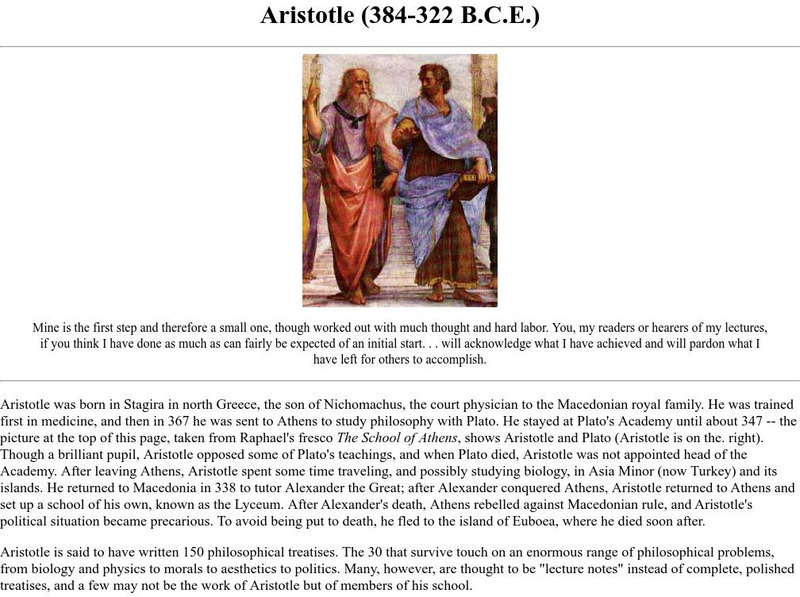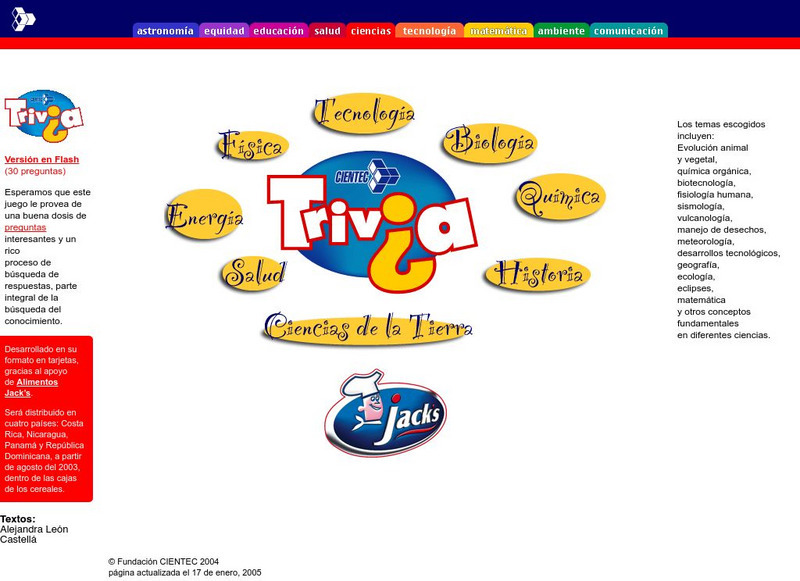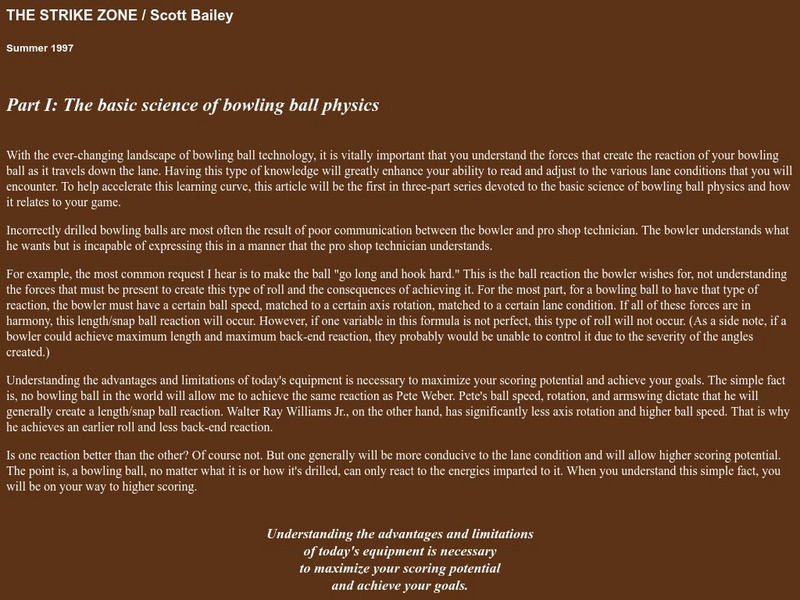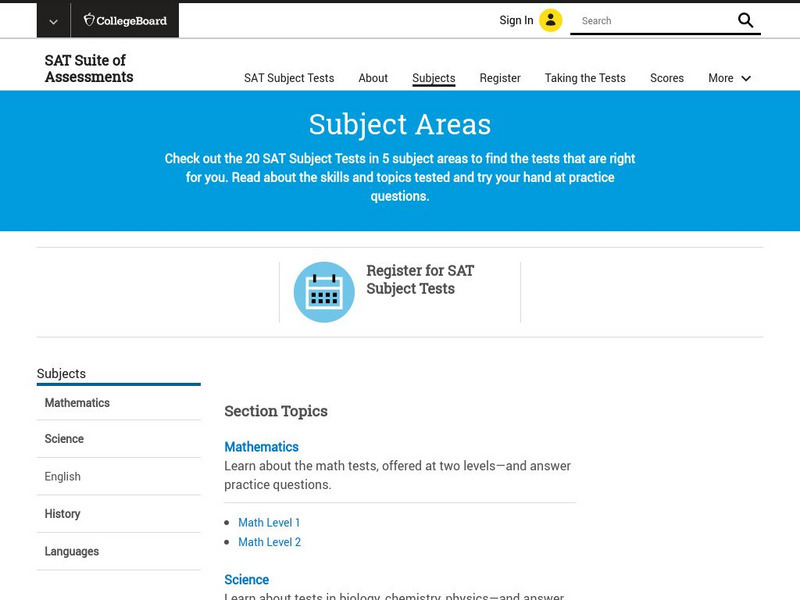National High Magnetic Field Laboratory
Magnet Academy: Isidor Isaac Rabi
Isidor Isaac Rabi won the Nobel Prize in Physics in 1944 for his development of a technique for measuring the magnetic characteristics of atomic nuclei. Rabi's technique was based on the resonance principle first described by Irish...
University of California
Ucmp: Aristotle
The life and philosophical treatises of Aristotle (384-322 BCE) are surveyed, including his writings on biology, zoology and physics.
National High Magnetic Field Laboratory
Magnet Academy: Heinrich Friedrich Emil Lenz
At the turn of the 19th century, scientists were beginning to gain a rudimentary understanding of electricity and magnetism, but they knew almost nothing about the relationship between the two. Baltic German physicist Heinrich Lenz took...
National High Magnetic Field Laboratory
Magnet Academy: John Daniel Kraus
For a man whose career involved the entire known universe, John Kraus had a remarkably insular upbringing. He was born and raised in Ann Arbor, Michigan, and earned his bachelor's, master's and doctoral degrees in physics, all at the...
National High Magnetic Field Laboratory
Magnet Academy: James Clerk Maxwell
James Clerk Maxwell was one of the most influential scientists of the nineteenth century. His theoretical work on electromagnetism and light largely determined the direction that physics would take in the early twentieth century. Indeed,...
Fundación Cientec
Trivia: 30 Preguntas! Ciencias
Thirty questions to test your knowledge of upper elementary / middle level science (in Spanish). Covers energy, health, physics, technology, biology, chemistry, history of science, and earth sciences. You can choose between a Flash or...
Other
Ncaba: The Basic Science of Bowling Ball Physics
This site from the National Capital Area Bowling Association gives information on why it is vitally important that you understand the forces that create the reaction of your bowling ball as it travels down the lane.
NASA
Nasa Space Science Data Archive: Astronomy and Astrophysics
NASA sponsored site dealing with several topics in Astronomy and Astrophysics. The site provides links to various topics.
Internet History Sourcebooks Project
Fordham University: Modern History Sourcebook: Letters on Newton
An interesting site from Fordham University that provides letters Voltaire wrote regarding Newton and his work.
Internet History Sourcebooks Project
Fordham University: Modern History Sourcebook: Principles of Natural Philosophy
This site from Fordham University is an exerpt from Newton's famous "Principia."
Florida State University
Florida State University: Magnet Lab: Timeline of Electricity and Magnetism: 1750 1774
With his famous kite experiment and other forays into science, Benjamin Franklin advances knowledge of electricity, inspiring his English friend Joseph Priestley to do the same.
Famous Scientists
Famous Scientists: Aristotle
A detailed biography of Aristotle (384-322 BC). Discusses his early life, his education, his relationship with Alexander the Great as tutor, the breadth of his work in various science disciplines, the school he established in Athens, and...
PBS
Pbs Teachers: Scientific American: Dragon Science: Time Travelers
Explore the work of archeologists and anthropologists by building a 3-D clay representation of a human skull to look for clues to a person's physical form, ethnic origin, behavioral patterns, health history and social standing.
Science Struck
Science Struck: 16 Interesting Facts About the Indus River
The Indus River originates in Tibet and extends all the way to the Arabian Sea. Learn some interesting facts about its geography, history, and what it is like today.
Science Struck
Science Struck: Sequent Occupance: Definition and Some Examples
Sequent occupance refers to the imprint left on a region by successive cultures throughout its history. The concept is described here and examples of places around the world are provided.
National High Magnetic Field Laboratory
Magnet Academy: Robert Millikan
Robert Andrews Millikan was a prominent American physicist who made lasting contributions to both pure science and science education. He is particularly well known for his highly accurate determination of the charge of an electron via...
BBC
Bbc: Vermeer and the Camera Obscura
An interesting viewpoint written by Philip Steadman on the controversial subject of Vermeer using a Camera Obscura to trace and create his paintings. There is factual evidence as well as a physical description of the Camera Obscura.
CK-12 Foundation
Ck 12: Physical Science: Elements
[Free Registration/Login may be required to access all resource tools.] Explores elements and their different properties, the history of elements, and how atoms relate to elements.
Khan Academy
Khan Academy: Ancient Greek Catapults and Medical Packs
This passage will test the knowledge of students who are taking the MCAT. This question asks students to work with launch velocity.
Other
Lund University Libraries: Directory of Open Access Journals
Open access journals are offered in all scholarly and scientific disciplines such as Biology and Life Sciences, History and Archaeology, and Physics and Astronomy. Site offers a search for new titles as well as archived journals....
The Franklin Institute
Marie Curie
Read the history of Marie Curie and her work with radium. Use the tabs above to read more about this scientist, her research, and her rewards.
The College Board
College Board: Practice for the Sat Subject Tests
The SAT subject tests are designed to test knowledge in particular content areas and determine how well you demonstrate that knowledge. Practice tests are available here for: mathematics, science, history, literature, and languages....
Institute and Museum of the History of Science
Museo Galileo: Aristotle 384 322 b.c.e.
A brief look at the life of Aristotle followed by a short discussion of his ideas about physics.
University of Waterloo (Canada)
University of Waterloo: James Prescott Joule
Lists the most important scientific contributions of James Prescott Joule. Provides some biographical details. Part of a set of History of Thermodynamics course notes.




















